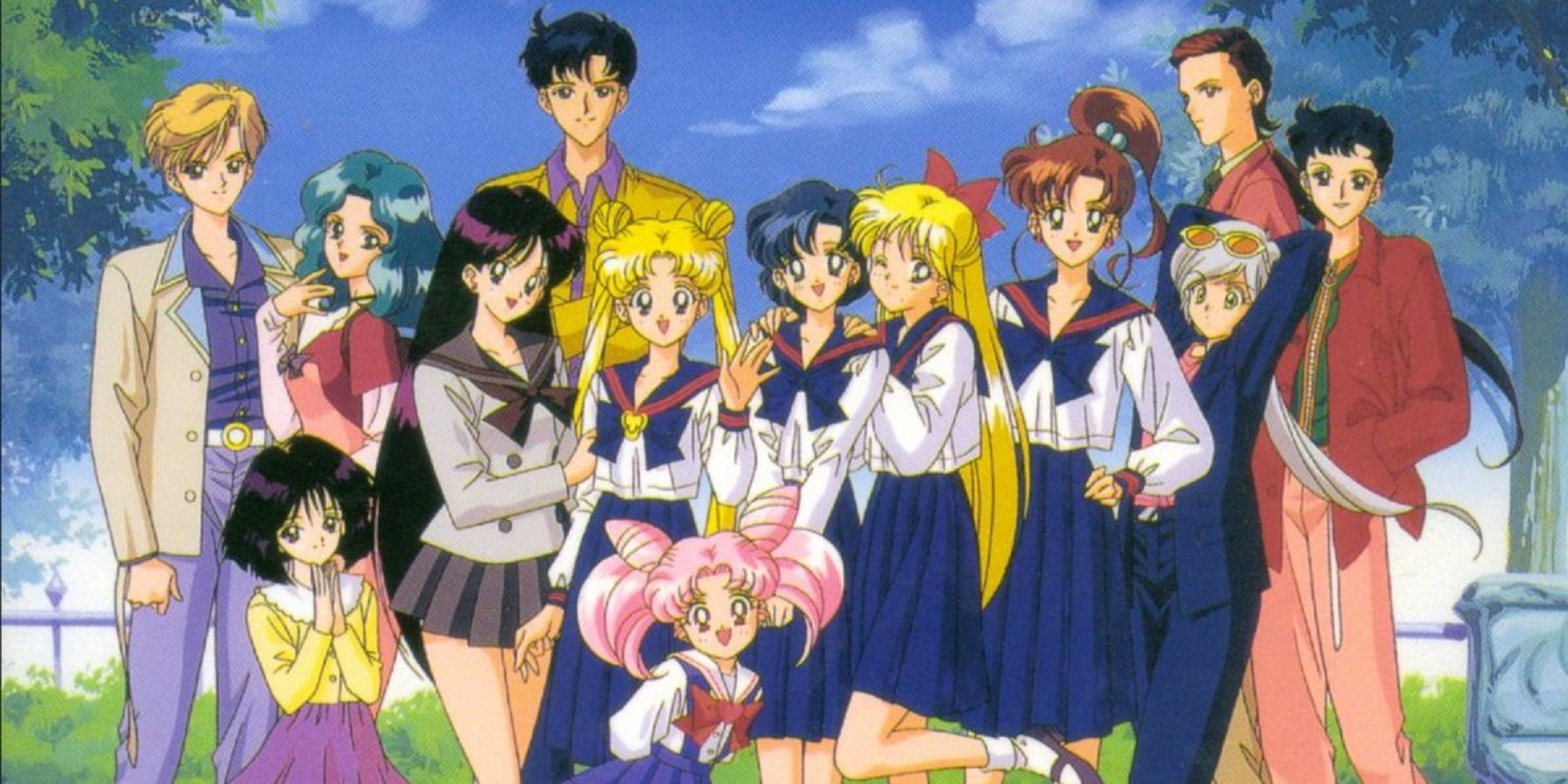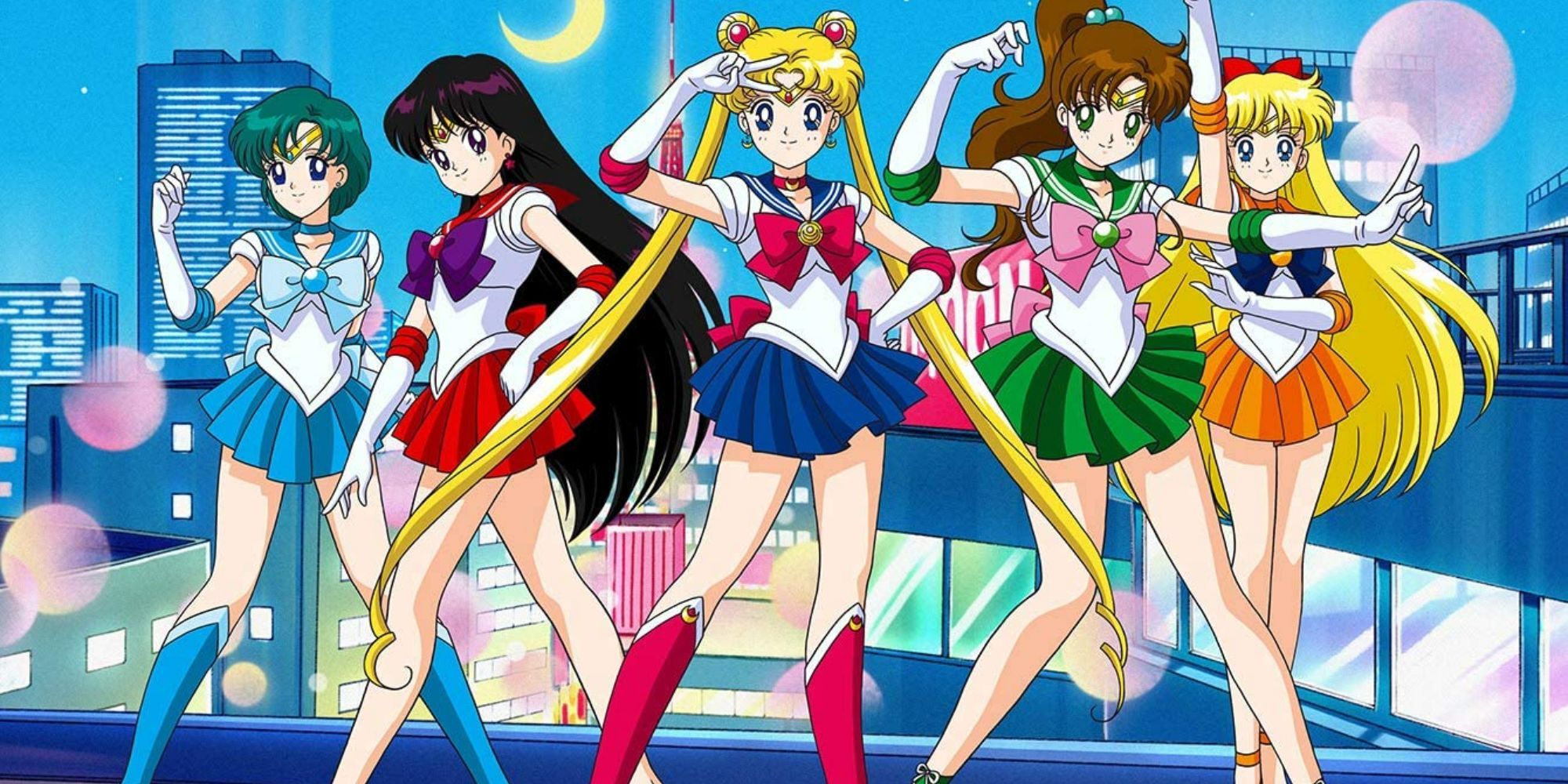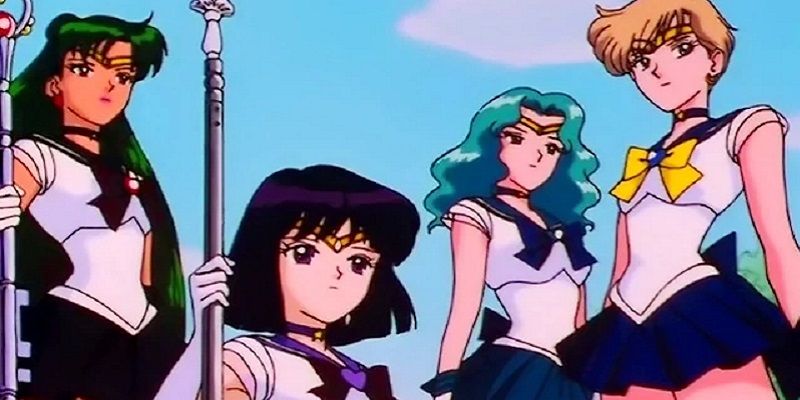Like many names in anime, the characters of Sailor Moon have names that relate to their powers, ideals, or kingdom. Some of these names are easy to pick apart like the characters of the Dark Kingdom - the corrupted remnants of the Earth Kingdom - having names after rocks or precious jewels such as Beryl, Jadeite, Nephrite, Zoisite, and Kunzite. When it gets into the main characters, mangaka Naoko Takeuchi got a little more creative with the puns she hides in the names of the senshi.
For a fast Japanese lesson, no is the Japanese possessive. It's a particle conveys ownership, and you will notice it is present in quite a few of the names present. While the kanji is different, the reading is 'no' which is what makes all of these puns. A perfect example is Sailor Moon herself. With the last name first, it's Tsukino Usagi or tsuki no usagi. In Japanese mythology, there is a rabbit on the moon making mochi, so instead of a man in the moon, there's a bunny. Tsuki for moon, no for of, and usagi for rabbit. Sailor Moon is a complete reference to the image you see in the moon.
The Inner Senshi
Her love interest, Chiba Mamoru has a way more literal approach. While also a popular Japanese name, mamoru is the verb 'to protect'. Combined with chiba whose best translation is 'place' or 'location', Tuxedo Mask has a very literal reference to his role of protecting the earth. His past life's name as Prince Endymion is easier placed as a reference to Greek mythology and a John Keats poem of the same name. Endymion was a lover of the moon goddess, Selene, and the Keats' poem is said to be one of the most romantic ever written. A perfect fit for the Sailor Moon love story.
Sailor Venus also has references to Greek mythology. Her name being Aino Minako, which breaks into ai no minako, gives us 'beautiful child of love'. With her crescent love beam and being of the planet Venus, planet of love, it is easy to see the vein in thinking Naoko Takeuchi had. Sailor Jupiter leans more towards oak trees instead of thunder and lightning. Kino Makoto, ki no makoto, give us 'tree field/forest of sincerity or trust'. As guardian of protection, her name was also almost mamoru.
Sailor Mars has an interesting naming choice that comes more in line to her personality as opposed to her origins or planet. Hino Rei, hi no rei, incorporates katakana, one of the three written languages of Japanese. Katakana is used for words that are not present in the Japanese lexicon in origin, they are borrowed from other languages. Sailor Mars' given name, Rei, is spelled in katakana and not in kanji which means the only way to read it is just as is. There are not any secret meanings; there is only her name. With hi meaning 'fire' and no still being a possessive, her name reads as Rei's fire or the fire of Rei. Her name is solely in reguard to her passion.
Sailor Mercury's name is Mizuno Ami, mizu no ami. Mizu is Japanese for water, but her given name can be broken up into two different kanji that give us a as in which could be referring to 'Asia' or 'second', and mi which translates to 'beauty'. Sailor Mercury's name translates to 'Asian beauty of water' or 'second beauty of water', potentially in reference to her being the second member to join the inner senshi.
The Outer Senshi
The outer senshi have their own common themes, these being in relation to royalty. Sailor Uranus' name is Tenou Haruka, ten ou haruka. As guardian of the sky, haruka best translates to 'distance', and ten means 'sky' or 'heavens'. Here's where the outer senshi like to stand out: ou is the kanji for 'king'. So Sailor Uranus has the benefit of being 'the distant king of the sky' or 'distant king of heaven'. Slightly fancier than the inner senshi with their elements and rabbits. Sailor Neptune, Kaiou Michiru, functions almost the exact same way although hers is almost a direct translation of the planet itself, kaiousei. Kaiou as in 'sea king' along with michiru which means 'rising, give us 'the rising sea king'. She matches her girlfriend.
Sailor Pluto is one of the more reclusive of the senshi, and her name also donates to the Roman god associated with her planet, well, her dwarf planet. Meiou Setsuna, broken down into mei ou setsuna, gives us 'dark king of the moment', although setsuna can also be read as 'sorrow'. It might be more cohesive to go with 'the sorrowful dark king'.
Lastly, Sailor Saturn has a completely different pun to go along with her completely different job of killing the rest of the universe when things go bad. Tomoe Hotaru, broken down into to moe hotaru, has a more poetic rather than funny pun. To refers to 'the earth', and moe is 'sprouting' like a plant. Already starting off with rising from the grave, but her given name is what really sells home her ghostly persona. Hotaru is Japanese for firefly, and in Japanese folklore, the firefly is a symbol of the dead. The Guardian of Silence's name translates to 'firefly sprouting from the earth', matching up with her powers of death and rebirth perfectly. With so much inspiration pulled from Greek and Roman mythology and celestial bodies, it is no wonder why Sailor Moon is one of the most well-loved shoujo anime of all time. The amount of effort and detail Naoko Takeuchi placed into her characters is evident by the dedication she gives to their names alone.



